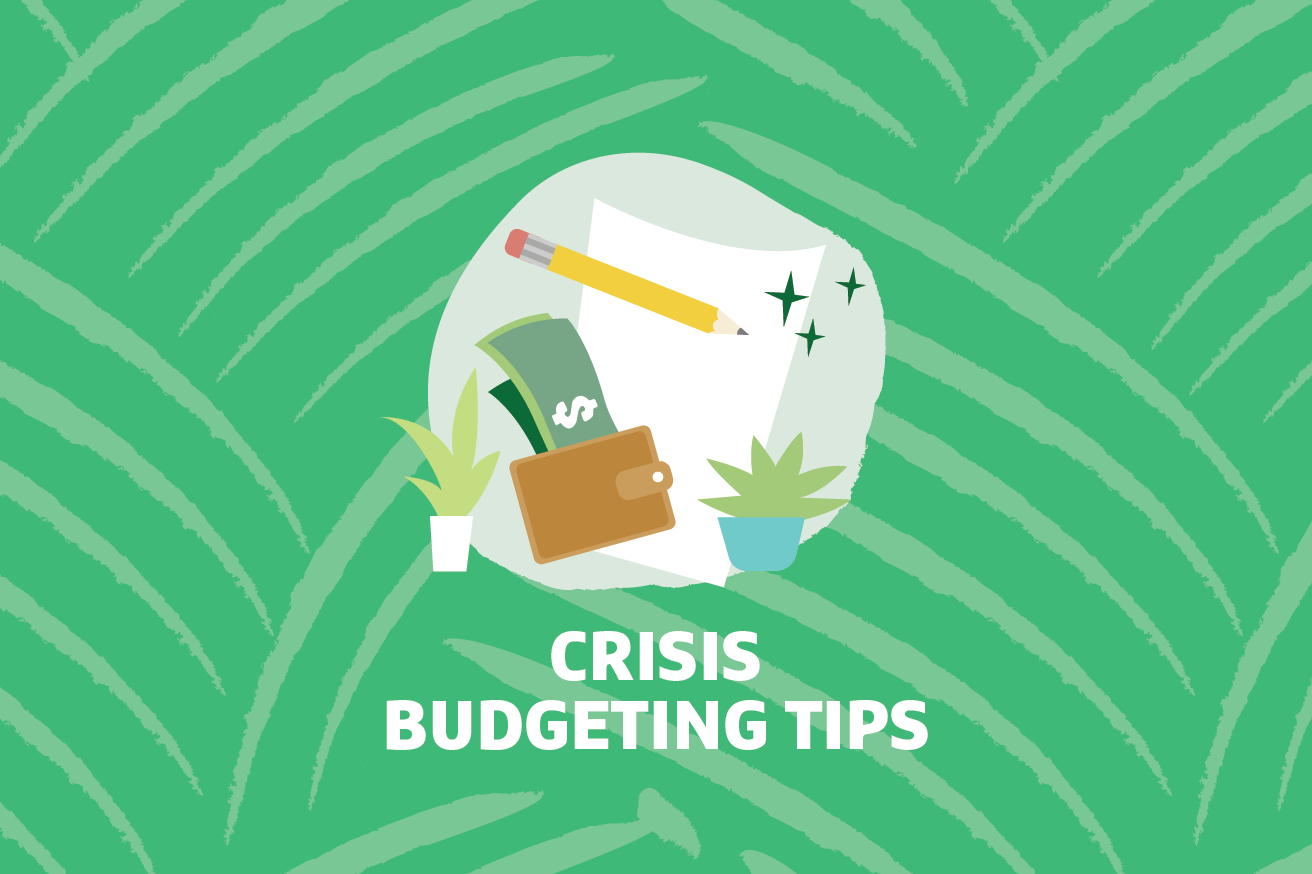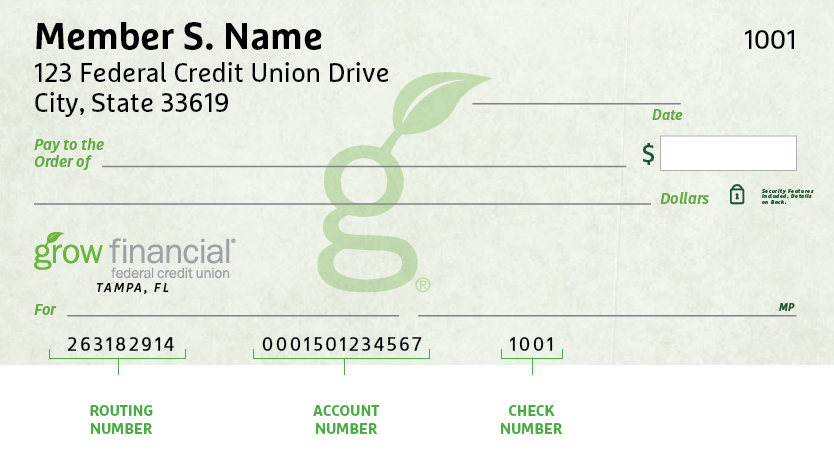- Personal
- Membership
- Membership
- Rates & Fees
- Checking
- Checking
- Personal Loans
- Personal Loans
- Wealth Management
- Investment Services
- Financial Advisors
- Resource Center
- Business

May 13, 2020
Budgeting During a Crisis
The effects of COVID-19 have been widespread and continue to impact our communities, both emotionally and economically. If you’re in the incredibly difficult position of having reduced income during this period, you may be wondering how you’ll make ends meet. We want to share some information on crisis budgeting, ideas for navigating bills and expenses during this time, and resources that can help.
What is a crisis budget?
Created to get you through a difficult financial period, a crisis budget prioritizes essentials, determines areas where spending can be reduced or paused, and clarifies the details of your financial picture. Living on a crisis budget is not fun and can be challenging. But with planning, you’ll have a better picture of your financial position and options for moving forward.
If you’ve never made a budget, you should know that crisis mode budgeting can be very different than budgeting in normal economic circumstances. Many of the conventional rules of budgeting go out the window. For example, a usual rule of thumb for budgeting is “Save at least 10%.” Right now, it’s okay to focus on day-to-day functions and essentials, and worry about long-term savings later. And, unlike your regular budget which would allow for leisure and entertainment, your crisis budget will strictly limit all discretionary spending.
1. Adapt your spending.
The most important step in crisis budgeting is determining what’s essential and what’s not. At this phase, you should work up a bare-bones budget that reflects only your basic, necessary living expenses. Minimize spending anywhere you can and determine the lowest amount of income you need to get by. (Use our Grow Mobile Banking app? Try tagging transactions with categorical labels to get a sense of your spending and use the budgeting tool to help make your budget.1)
Tips to make cutting two of the most beloved non-essentials a little easier:
- Take-out food: Reducing food costs by eating at home? You can find dozens of online blogs with great tips on discount grocery shopping, budget-friendly meals and stretching your dollar in the kitchen. Use this time to learn a new cooking skill and get creative with low-cost meals.
- Streaming services and cable TV: Remember, it’s not “goodbye”; it’s only “see you later.” Many services are offering free content to stave off boredom during this time. You might not have as wide a variety as usual, but you can still score dozens of hours of free entertainment.
2. Map it out.
Make a roadmap of your anticipated essential spending for the next few months, inclusive of bill due dates. Knowing where every dollar will go is important, especially when operating in economic crisis mode. The roadmap will show you how far your dollar will stretch so you can plan for potential shortfalls. (Keep reading for additional resources for financial assistance if you need help making up the difference.)
Tip: Remember to check in with your spending daily. Eliminating leisure spending doesn’t come naturally to most of us, so refocusing on your financial plan can be helpful.
3. Seek help when needed.
No one should have to endure a crisis alone. Even if you feel alone or just don’t want to burden your loved ones with details, there are community resources offering general and specific advice. If you want to talk to someone on our team about your options, we have a dedicated line for financial assistance: 813.832.2227.
- Do you notice bill dates piling up? Contact creditors to request new billing cycle dates that correspond better with your ability to pay. (There is no guarantee a creditor will accommodate these requests, but some will, so it’s good to ask.) Also, many companies and creditors are offering bill deferment, and if you’re faced with difficult decisions about which bills get paid first, contact your creditors right away.
- If you’ve lost employment, connect with your state’s unemployment office as soon as possible to apply for benefits.
- Track your stimulus payment at IRS Economic Impact Payments.
- If needed, look at consolidating debt onto a lower-interest loan, such as the Grow Visa® Preferred Credit Card with a low introductory rate and no-cost balance transfers.2 This can immediately reduce the interest you’re paying and help you minimize any debt snowballing during this time.
Learn more about financial assistance available during COVID-19 through Grow, including payment assistance and low-interest personal loans.
1Additional data charges may apply. Please see your wireless carrier for more information. 2Subject to credit approval. Introductory Rate as low as 1.99% to 4.99% APR. The introductory rate is effective for the first six billing cycles for purchases and balance transfers. After the introductory period expires, or if you do not qualify for an introductory rate, your standard APR will range between 6.99% to 17.49% for purchases and balance transfers. This is a variable rate. The rate you receive will be based on your credit worthiness. This rate will vary with the market based on Prime Rate as published in the Wall Street Journal “Money Rates” table on the last day of each calendar month. The APR will not exceed 18.00%. If the minimum monthly payment is 60 days late twice in a twelve month period, the rate will revert to a default rate of 18.00% for six (6) billing cycles. Other APRs: Cash Advances 18.00%, Overdraft to Share Account 18.00%. A finance charge of 1.00% will be charged on foreign transactions. Rates are effective as of 04/07/2020 and could change without notice. Annual Percentage Rate (APR).
Posted In:
How to Find Your Routing & Account Numbers
When you make a payment online, by phone or on a mobile device, you may be asked for our routing number and your checking account number. Credit unions and banks use these numbers to identify accounts and make sure money gets where it’s supposed to be. You’ll also need to provide your routing and checking account numbers for:
- Direct deposits
- Electronic checks
- Military allotments
- Wire transfers
Where to Find Your Routing & Checking Account Numbers
Your personal checks include both our routing number and your account number, as shown on the Grow check example below.

Don’t have a Grow check? No worries.
Visit any Grow store and ask for a Direct Deposit Form. It lists both your routing number and checking account number.
Making a Loan Payment
When it comes to making payments, we try to make it as painless as possible to pay your loan every month. We have several different ways to pay, including convenient online options.
Pay Online
You have two ways to pay online by transferring funds from another bank or credit union.
- Grow Online Banking (Preferred payment method for any loan)
This is the simplest way to pay your loan. You can make one-time payments or set up automatic recurring payments in Grow Online Banking. Once you log in, select “Transfer/Payments” from the menu. If you’re not enrolled in Grow Online Banking yet, you can set up your account in just a few minutes.
Log In
- Debit Card or ACH (Available for auto, personal loans and HELOCs)
Note: ACH and debit card payments are not available for credit cards or most mortgages, except HELOCs.
We accept ACH payments with no additional fees or Mastercard® and Visa® debit cards with a convenience fee of $4.95. To get started with an online ACH or debit card payment, select Pay Now below.
Pay Now
Pay by Mail
You can also pay any Grow loan by check through the mail. Please remember to include your account number and Grow loan number on the check. (For credit card payments, please do not write your 16-digit credit card number on the check, which can cause a delay in processing the payment.)
Address for auto, credit card, personal loan and HELOC payments:
Grow Financial Federal Credit Union
P.O. Box 75466
Chicago, IL 60675-5466Address for personal first or second mortgages and home equity payments:
Grow Financial Federal Credit Union
P.O. Box 11733
Newark, NJ 07101-4733You Are About To Leave GrowFinancial.org
At certain places on this site, there are links to other websites. Grow Financial Federal Credit Union does not endorse, approve, represent, certify or control those external sites. The credit union does not guarantee the accuracy, completeness, efficacy, timeliness or accurate sequencing of the information contained on them. You will not be represented by Grow Financial Federal Credit Union if you enter into a transaction. Privacy and security policies may differ from those practiced by the credit union. Click CONTINUE if you wish to proceed.
